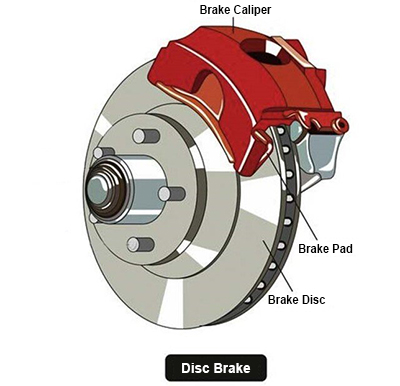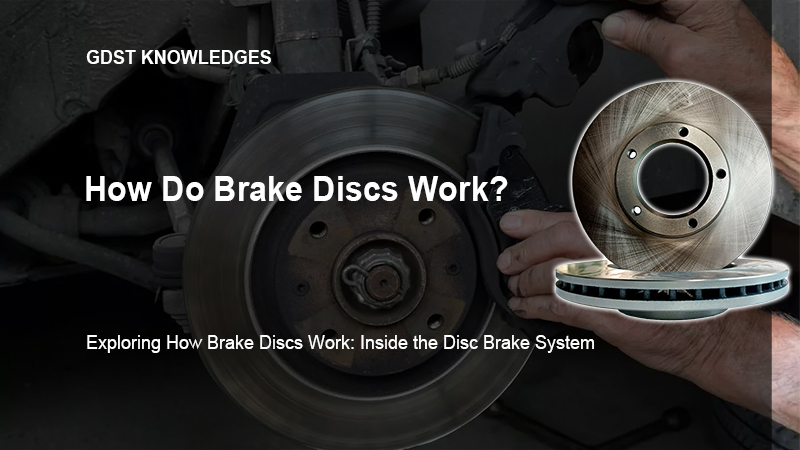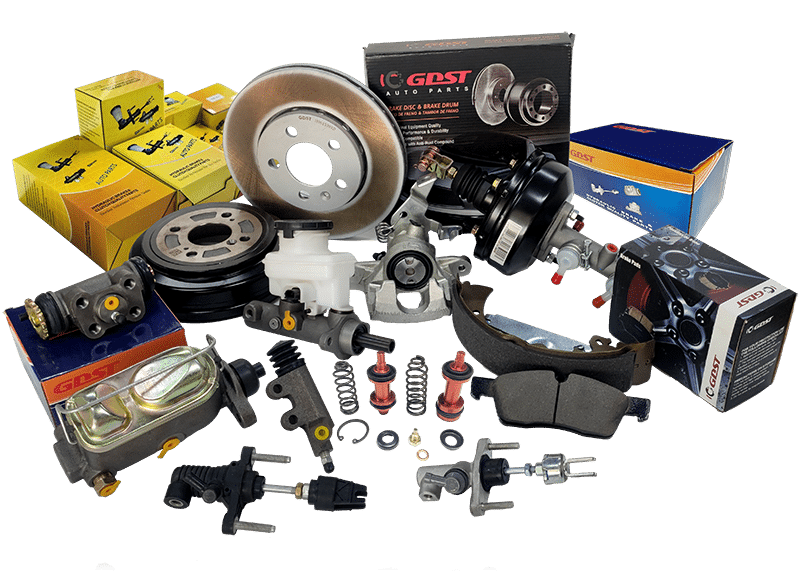As a key component in the braking system, the performance of the brake disc is directly related to the overall braking effect of the vehicle.
For you who are a professional auto parts wholesaler or retailer, in-depth insight into the working principle of the brake disc can not only help you provide customers with more experienced and accurate purchase advice but also ensure that brake discs meet high standards, boosting your business.
First, let us know the components of a disc brake.
Disc Brake Component

The disc brake component consists of the following main parts: brake disc, brake caliper, and brake pad.
Brake Discs
A brake disc is a round metal disk that is mounted in the center part of the wheel and rotates with the wheel.
Brake discs not only need to be strong and stiff enough to withstand the enormous pressure generated during braking, but they also need to have good abrasion resistance, heat resistance, and heat dissipation.
You can know what type of brake disc you specifically need here.
Brake Calipers
Brake calipers are mainly composed of the caliper body and piston.
When you brake, the piston tightly clamps the brake pads against the brake discs, ensuring a close fit and ultimately letting the vehicle stop!
For more information about brake calipers, please look at here.
Brake Pads
Brake pads rub against the brake discs under pressure from the calipers, thus stopping or slowing the car.
Different types of brake pads can have a significant impact on braking performance, noise levels, wear resistance, longevity, and cost.
Brake pads wear out for a long time use, we need to check and replace them regularly. You will find the answer when it’s time to replace your brake pads in the article.
How Do Brake Discs Work?

When you’re driving, if you see an obstacle in front of you or want to slow down and stop, you will press the brake pedal which is a signal to the brake system, “Hey, I need to slow down!”
The next thing you know, the brake system is working.
Inside the car, the brake master cylinder contains brake fluid, and pressing the brake pedal forces this brake fluid out of the master cylinder, directing it through brake lines to each wheel of the car.
Each wheel has a brake wheel cylinder, which has a small piston in it. And when the brake fluid flows to the brake wheel cylinder, it pushes the small piston.
As soon as hydraulic pressure pushes the small piston, it moves along with the brake caliper, which holds the two brake pads.
As the brake caliper moves, it pushes these two pads against the center of the brake disc.
Now that the disc and pads press together, they begin to rub hard against each other.
This friction converts the rotational energy of the brake disc into heat, gradually slowing down the car.
When you release the brake pedal, it’s like you’re telling the brake system, “OK, I don’t need to slow down anymore.”
So, the squeezing of the brake fluid stops, the small piston in the brake wheel cylinder slowly returns to its original position, and the brake calipers release the brake pads.
Thus, the brake discs and pads are separated, the wheels are free to turn again, and the car can continue on its way.
This is the workflow of the brake disc, easy to understand, right?



